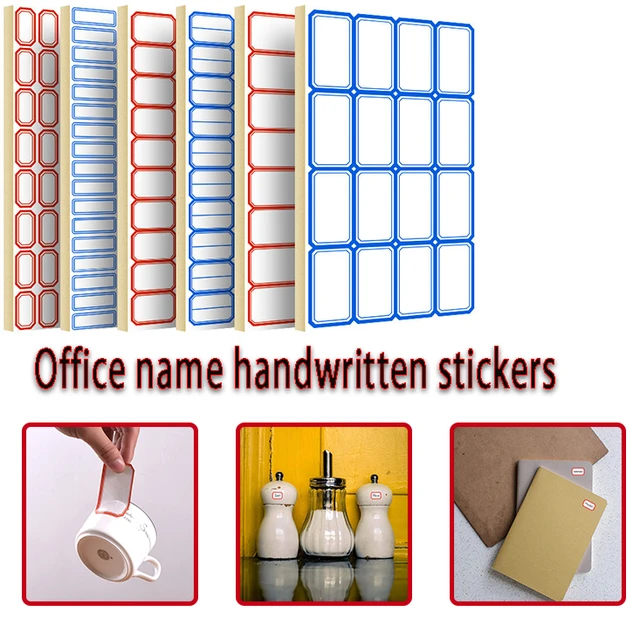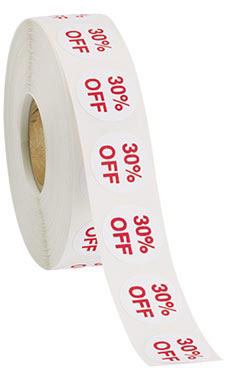Finest Products to Consider for Self-Adhesive Labels Requirements
Finest Products to Consider for Self-Adhesive Labels Requirements
Blog Article
Picking the Right Self-Adhesive Labels for Your Service and Personal Requirements
Selecting the appropriate self-adhesive labels for both service and individual applications requires a nuanced understanding of various elements that affect their performance. As we discover these crucial components, it becomes clear that a calculated strategy is essential to ensure your labels not only satisfy assumptions however additionally enhance your overall branding and organization efforts.

Comprehending Tag Materials
When picking self-adhesive labels, comprehending the various tag products is important to ensuring ideal efficiency and sturdiness. The selection of product straight influences the tag's durability, look, and performance. Usual label products consist of paper, polyester, plastic, and polypropylene, each offering unique advantages and disadvantages.

Polyester tags provide premium toughness, being resistant to tearing, dampness, and UV light. This makes them an excellent option for commercial applications or products that call for long-lasting labeling options (Self-Adhesive Labels). Polypropylene, while comparable to polyester, is usually much less pricey and provides a good equilibrium of toughness and print high quality
Additionally, consider sticky types-- permanent, removable, or repositionable-- depending on your certain requirements. Eventually, choosing the appropriate label material is essential for attaining the preferred end result, ensuring that your labels carry out successfully in their desired settings.
Determining the Right Size
Choosing the proper dimension for self-adhesive tags is a basic action that enhances the selection of tag products. The dimension of a tag can dramatically affect its functionality, visibility, and overall impact. For that reason, it is vital to think about the designated use the label when determining its dimensions.
Firstly, evaluate the details that requires to be shown. Labels including more message or graphics will certainly need larger measurements to make certain readability and aesthetic charm. Conversely, minimal layouts may take advantage of smaller tags that preserve a smooth aesthetic.
In addition, think about the surface on which the tag will certainly be used. Different surface areas, such as envelopes, bottles, or boxes, may dictate specific dimension demands to make the most of adhesion and exposure.
Furthermore, think of the quantity of tags needed; bigger labels might be much more cost-effective for mass printing.
Assessing Adhesive Strength
Exactly how can one ensure that self-adhesive tags remain securely affixed in various problems? Evaluating sticky strength is crucial for ensuring that tags carry out ideally, whether in a controlled setting or based on severe temperature levels, humidity, or various other elements. The adhesive's efficiency is generally identified into three categories: detachable, permanent, and ultra-permanent. Each classification offers various applications, and comprehending the planned use is vital.
For instance, detachable adhesives are optimal for tags that might require go to my blog to be rearranged or gotten rid of without residue, making them suitable for momentary applications. Alternatively, irreversible adhesives are designed to endure different problems and supply a solid bond, making them ideal for lasting labeling demands.
Testing the adhesive strength can include peel bond tests, which determine the force needed to eliminate the label from a surface. This assessment assists figure out if the adhesive will certainly do sufficiently in real-world situations. Furthermore, taking into consideration the surface area product is vital, as different substratums might engage with the sticky differently. Ultimately, selecting the right glue toughness makes sure that self-adhesive labels satisfy their purpose, keeping stability and visibility throughout their intended life-span.
Picking the Right Complete
The coating of self-adhesive labels plays a considerable role in their general performance and appearance, enhancing the adhesive toughness previously gone over (Self-Adhesive Labels). The choice of surface can influence not only the aesthetic impact of the tag but likewise its toughness and functionality. Typical coatings include matte, gloss, and semi-gloss, each offering various functions
A matte finish supplies a non-reflective surface area that is ideal for creating, making it ideal for tags that require hand-written info. This finish also has a tendency to conceal fingerprints and smudges, boosting the tag's look over time.
On the other hand, a gloss surface uses a glossy, vibrant appearance that boosts shade saturation, making it ideal for marketing labels that need to catch the eye. This finish might be much less ideal for composing, as it can smear quickly.
Semi-gloss surfaces strike a balance between both, offering a slight luster while keeping good writeability. Additionally, consider elements such as moisture resistance and UV protection, especially for tags revealed to rough settings. By meticulously picking the ideal coating, businesses and people can guarantee their tags efficiently convey their desired message while keeping durability.

Thinking About Printing Options
Reviewing printing options is essential for optimizing the performance of self-adhesive tags. The approach you pick will significantly impact the quality and sturdiness of the final item. Self-Adhesive Labels. Usual printing techniques include digital, flexographic, and thermal transfer printing, each offering unique benefits and factors to consider
Digital printing is excellent for variable information and short runs, permitting quick turnaround times and customization. This method enables businesses to generate tags with high-resolution graphics and detailed layouts without sustaining considerable configuration prices. It might not be click for info the most affordable option for larger amounts.
Flexographic printing, on the various other hand, is appropriate for high-volume production. It utilizes adaptable alleviation plates to transfer ink onto different materials, ensuring regular top quality across large sets. This technique is typically preferred for its effectiveness and capacity to publish on a wide variety of substratums, consisting of those with special coatings.
Thermal transfer printing is an additional practical choice, particularly for tags that require sturdiness versus severe conditions. This approach provides outstanding print quality and is generally utilized for barcode and inventory labels.
Inevitably, choosing the right printing choice depends upon your certain labeling needs, budget plan, and manufacturing volume.
Verdict
To conclude, picking the suitable self-adhesive tags requires mindful consideration of different factors, including tag materials, size, glue strength, finish, and printing choices. Each facet plays an important role in making sure that the labels satisfy details company or individual demands efficiently. By extensively evaluating these aspects, people and businesses can accomplish optimal results, boosting both capability and visual allure in labeling applications. Eventually, informed options cause higher satisfaction and success in label utilization.
When selecting self-adhesive tags, recognizing the numerous tag materials is important to making sure ideal performance and sturdiness.Choosing the appropriate size for self-adhesive tags is an essential step that complements the selection of tag materials. Ultimately, selecting the appropriate glue stamina guarantees that self-adhesive labels satisfy their purpose, keeping stability and visibility throughout their desired life expectancy.
The finish of self-adhesive tags plays a considerable role in their total performance and appearance, enhancing the adhesive toughness previously discussed.In final thought, selecting the proper self-adhesive labels demands careful factor to consider of various variables, including tag straight from the source materials, dimension, adhesive toughness, surface, and printing options.
Report this page